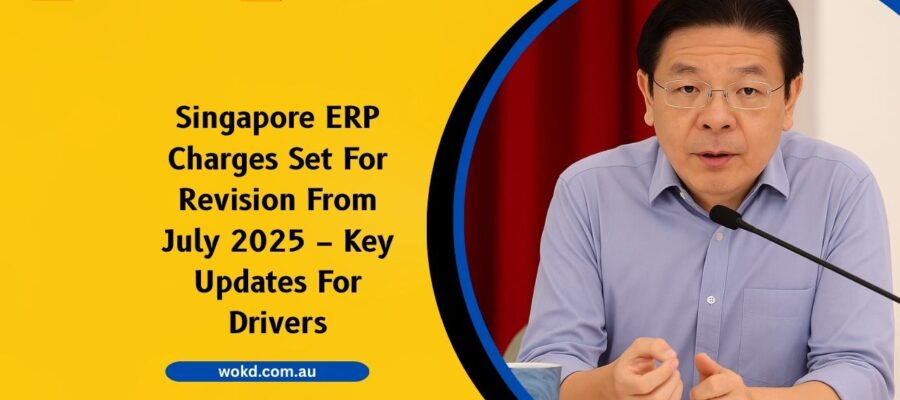In a significant move to manage traffic congestion, Singapore’s Land Transport Authority (LTA) has announced revisions to the Electronic Road Pricing (ERP) charges effective from July 1, 2025.
This update aims to optimize traffic flow during peak hours and encourage off-peak travel.
Key Changes in ERP Charges
The revised ERP rates focus on adjusting charges during specific time slots to better reflect traffic conditions. Here’s a breakdown of the changes:
| Time Slot | Old Rate (SGD) | New Rate (SGD) | Remarks |
|---|---|---|---|
| 7:00 AM – 8:00 AM | 1.50 | 2.00 | Higher to manage morning peak |
| 8:30 AM – 9:00 AM | 2.00 | 2.50 | Max congestion, highest rate |
| 12:00 PM – 1:00 PM | 1.00 | 0.50 | Lower to incentivize off-peak use |
| 5:30 PM – 6:30 PM | 2.50 | 3.00 | Evening rush hour surge |
These adjustments are part of LTA’s ongoing efforts to manage road congestion effectively.
Affected Routes
The ERP rate changes will primarily impact major expressways and arterial roads, including:
- Central Expressway (CTE): Particularly near the Orchard exit, where persistent congestion has led to a $0.50 increase.
- Pan-Island Expressway (PIE): Adjustments made to manage traffic volumes.
- East Coast Parkway (ECP): Revisions aim to alleviate bottlenecks during peak hours.
Additionally, new ERP gantries will be introduced in emerging high-traffic zones such as the Punggol area and parts of the Jurong Innovation District to preempt congestion as these areas develop.
Navigating the Changes
To adapt to the revised ERP charges, drivers are advised to:
- Reassess Travel Times: Plan journeys to avoid peak-rate periods.
- Utilize Real-Time Traffic Apps: Stay informed about current traffic conditions and ERP charges.
- Consider Alternative Transport: Explore carpooling or public transport options during high-fee hours.
Businesses relying on road logistics should audit their routes to mitigate the impact of increased ERP charges on operating costs.
Future Developments: ERP 2.0
The July 2025 revision is part of a broader move towards a more responsive ERP system. The upcoming ERP 2.0, based on Global Navigation Satellite System (GNSS) technology, will replace the current gantry-based system.
This new system will allow for more dynamic pricing based on real-time traffic data and eliminate the need for physical gantries.
All Singapore-registered vehicles will need to replace their In-Vehicle Unit (IU) with a new On-Board Unit (OBU).
The revised ERP charges effective from July 2025 reflect Singapore’s commitment to managing road congestion through dynamic pricing strategies.
Drivers should stay informed and adapt their travel habits to navigate these changes efficiently.
FAQs
When will the new ERP charges take effect?
The revised ERP charges will be effective from July 1, 2025.
Which areas are most affected by the ERP rate changes?
Major expressways like the CTE, PIE, and ECP will see significant adjustments. New gantries will also be added in high-traffic zones such as Punggol and the Jurong Innovation District.
What is ERP 2.0 and how will it affect drivers?
ERP 2.0 is a new satellite-based system that will replace the current gantry-based ERP. It will allow for dynamic pricing based on real-time traffic data and eliminate the need for physical gantries. Drivers will need to install a new On-Board Unit (OBU) in their vehicles.

